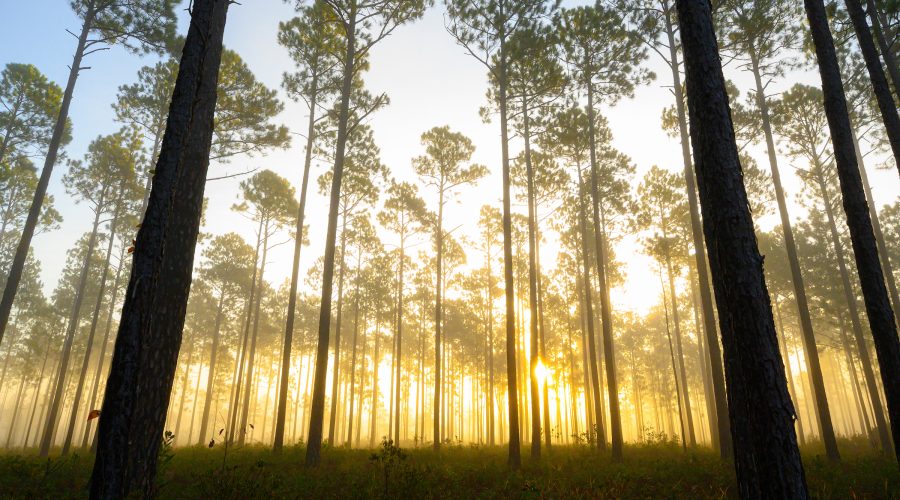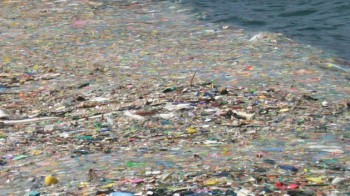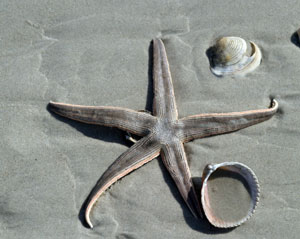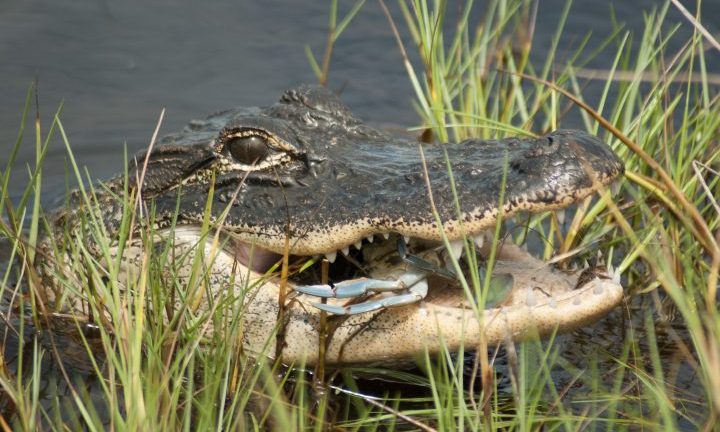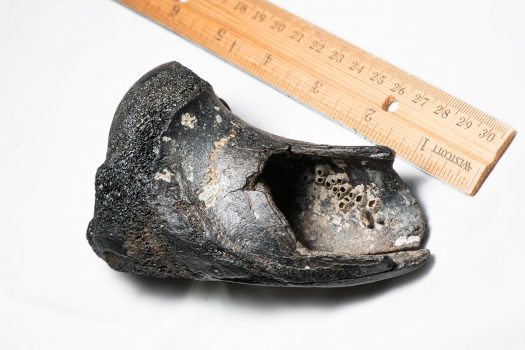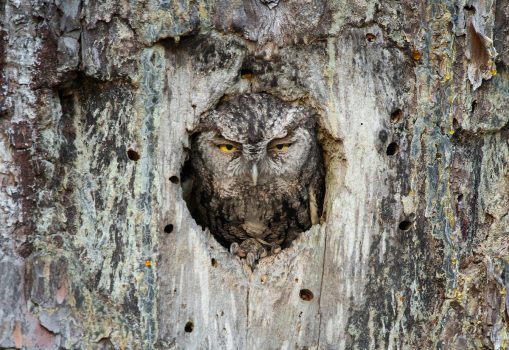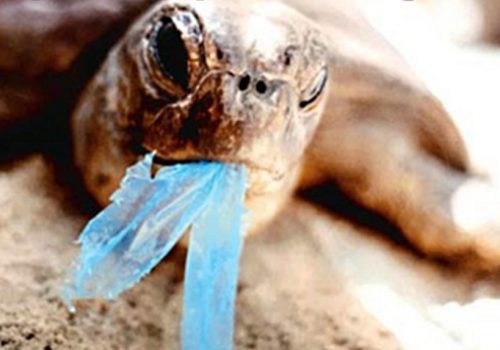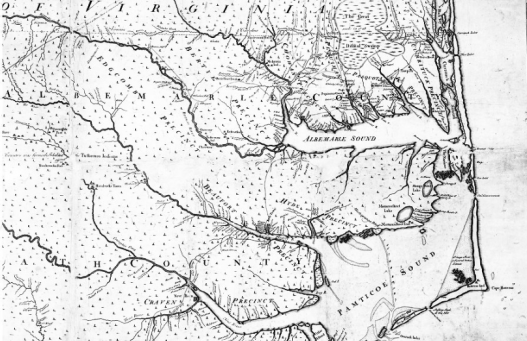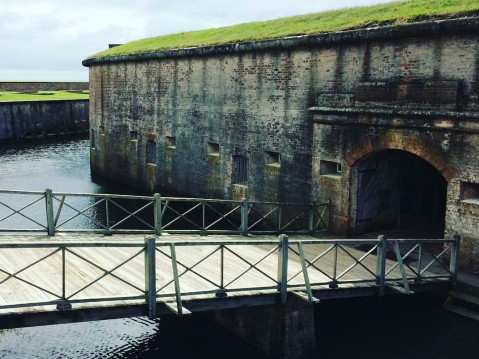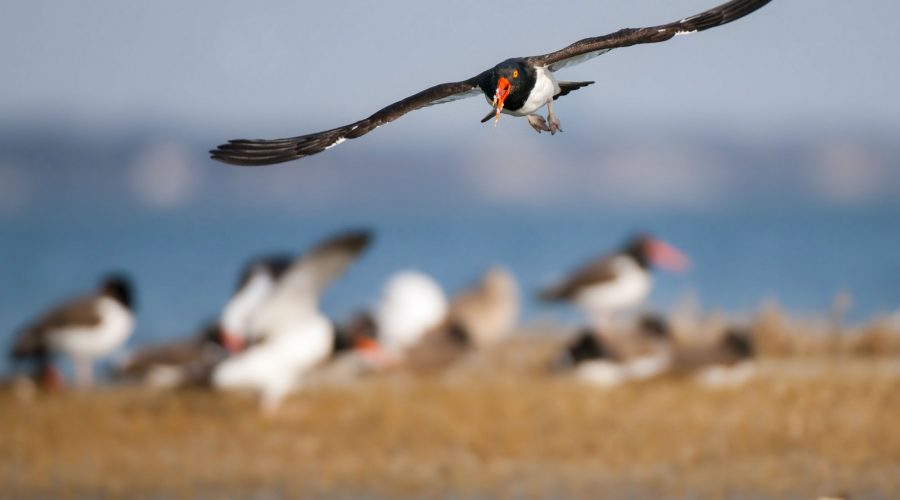An endangered red-cockaded woodpecker flies in to his nesting cavity with a spider in in his beak for the awaiting chicks inside. Red-cockaded woodpeckers are an endemic species of the longleaf pine forest and were placed on the endangered species list due to the destruction of nesting habitat. Longleaf pine forests once covered an area the size of the Amazon across the southeastern United States. But today, less than 10% of this forest remains. Photo: Jared Lloyd
Commentary: My firsthand experience with an algal bloom
Photographer Jared Lloyd, who recently captured images of an algal bloom in Edenton for Coastal Review, shares what exposure to the green slime’s toxic fumes is like. Spoiler alert: It’s no fun.
Alienation: Are You Really at Home?
We can’t truly experience the natural world until we come to know the world in which we live. If not, we risk becoming alienated from it — commentary by Jared Lloyd.
Study: Ocean Wilderness is Disappearing
Columnist Jared Lloyd explains his concerns about the results of a recently published study on the health of the world’s oceans and its diminishing marine wilderness.
That Which We Call A ‘Starfish’
What’s in a name? Would the creatures we know as “starfish” or “sea stars” be as stellar if called something else? Our Jared Lloyd wades into the debate over how best to refer to these echinoderms.
Accidental Habitat or Nature’s Ghosts?
Columnist Jared Lloyd explores whether alligators in the salt marsh are the result not of some fluke but rather a species returning to old haunts we didn’t know about — and the implications for wildlife management.
Beach Finds: Relics of a Former World
Our longtime columnist Jared Lloyd is back with an account of a beachcombing discovery that, although not all that unusual, provides an imagination-stirring glimpse into our planet’s ancient past.
Screech Owls of the Longleaf Pines
Spending time alone in the deep longleaf pine forest, nature photographer Jared Lloyd has developed his own theories about the coloring of the eastern screech owl.
Commentary: Collective Amnesia on Bag Ban
While some folks may not recall, business owners with much at stake in the Outer Banks’ environmental health remember why the plastic bag ban was enacted, as columnist Jared Lloyd reminds us.
Our Coast’s History: Rogues’ Harbor
Colonial Virginians called it “Rogues Harbor,” a derisive term for the Albemarle region, suggesting that pirates, debtors, revolutionaries and outcasts had settled the area.
The Ocean: Calming a Stormy Mind
Whether it’s the smell of the sea or the rhythmic lapping of waves upon the shore, science has long known the calming effect the ocean has on the human mind, the “blue mind” as one scientist calls it.
A Hurricane and the Treasure Fleet
Weather and treasure collided off the coast of Ocracoke in 1750 and the result was the greatest act of piracy in history. And Blackbeard had nothing to do with it.
The Gulf Stream and the Age of Exploration
That river of water that flows north along our coast played a vital role in Spain’s building of an empire and England’s first settlement in the New World.
Our Coast: Fort Macon and Elliott Coues
Fort Macon has a rich history as a Civil War site, but its story also features an ambitious doctor named Elliott Coues, whose interest in the natural surroundings helped focus attention on environmental science in and around Beaufort.
Rachel Carson and the Great Awakening
Rachel Carson came along at the right time, when Americans were finally awakening to the vast natural beauty around them. Her writings would help us realize what we were losing after decades of mass slaughter.
Walking in Rachel Carson’s Footsteps
In this the first of two parts, writer-photographer Jared Lloyd spends time at the Rachel Carson Reserve near Beaufort to relive the time the great writer and scientist spent there while working on her first book.



